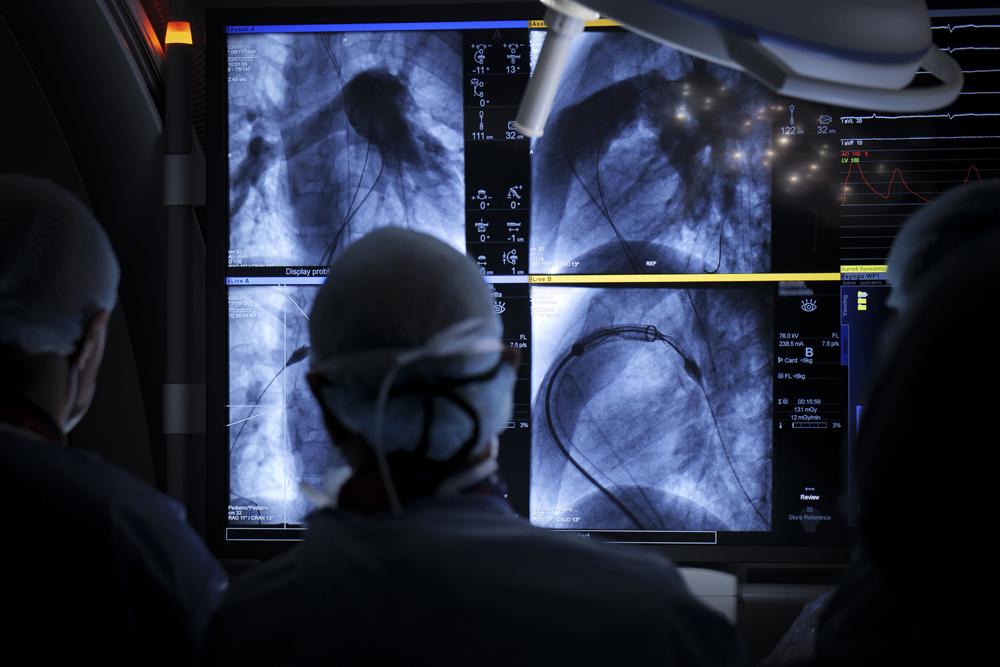A self-expanding pulmonary valve bio-prosthesis capable of adapting more effectively to the anatomy of children and young people with congenital heart diseases: this is the innovative system allowed by technological developments in the field of trans-catheter procedures, that make it possible to avoid open-heart surgeries. The new prosthesis, which received the EC approval in May this year, is already a reality in the Interventional Cardiology Unit of the Bambino Gesù Children’s Hospital, directed by Dr. Gianfranco Butera, who successfully performed it in two boys aged 15 and 19.
THE DEFECTS OF
PULMONARY VALVES
The pulmonary valve is one of the four cardiac valves: placed between the right ventricle and the pulmonary artery, it has the task of ensuring that the blood proceeds smoothly, without reflux, on its way to the lungs to recharge with oxygen. Some pathologies compromise its functioning. This is the case of the tetralogy of Fallot which represents one of the most frequent severe congenital heart diseases. The right ventricle, due to the malfunctioning, is subject to overwork and may undergo decompensation with very severe consequences. It is therefore often necessary to implant a pulmonary valve prosthesis to replace the damaged valve. The procedure takes place in the hemodynamic room through a minimally invasive approach, without the need for open-heart surgery, by inserting a cannula into the artery, inside of which a catheter (flexible tube) of minimal size is slid and placed where the problem to be solved is.
THE “EXPANDABLE BALLOON”
TECHNIQUE
Trans-catheter pulmonary valve prostheses have entered the clinical practice in 2007. They consist of biological material (obtained from a similar porcine or bovine valve, treated and fixed on a metal ring covered with synthetic fiber) and are all based on an “expandable balloon” technology. The valve is sewn inside a metal support (stent) which is implanted by means of a balloon introduced through the catheter. The balloon is inflated and widens the stent placing the prosthesis in the desired position. The size of the balloon – from about 16 to 29 millimeters – however, represents a limit to the use of this approach. In fact, in most patients, the space in which inserting the valve prosthesis is wider, as a consequence of the disease, the surgeries already performed or due to other events in patients’ clinical history. This is the reason why with “expandable balloon ” technology it is possible to treat only about 20% of patients who need to replace a pulmonary valve.
THE NEW
“SELF-EXPANDABLE VALVE”
TECHNOLOGY
The new technology is based on the “self-expandable valve” system. The stent is self-expanding and is able to reach larger diameters – up to about 36 millimeters – therefore greatly increasing the number of patients eligible for the treatment. Every year, the Bambino Gesù Children’s Hospital performs this procedure on about 30 children and young people; this number can be more than doubled with the new technique, by also avoiding open-heart surgeries. Many of the patients have previously undergone surgical procedures, therefore the possibility to access a minimally invasive procedure is an undeniable advantage. The system led by the Hospital of the Holy See was developed by a Chinese company and received the CE certification in May 2022 (Venus Valve). At present, no other similar systems are available in the clinical practice.
Bambino Gesù is the first European hospital that uses this technology after clinical approval. Furthermore, it was also identified as a reference center for Italy and Europe, and will have the task of promoting its use in other centers, by also taking care of the training of operators.
THE BOYS TREATED AT
BAMBINO GESÙ
The first two patients treated at Bambino Gesù, aged 15 and 19, had a previous medical history of multiple surgeries due to their heart disease. An additional cardiac surgery would have represented a significant risk. In both cases there were also additional risk factors such as scoliosis, previous stroke, impairment of the functional capacity.
For patients’ selection, the collaboration between the interventional Cardiology unit and the advanced thoracic and cardiovascular radiology unit directed by Dr. Aurelio Secinaro is fundamental. In addition to magnetic resonance imaging (MRI) and computed tomography (CT) which allow to obtain detailed information on the anatomy and functioning of the cardio-vascular system in a limitedly invasive way, the role of 3D technology is relevant. The reconstruction of the three-dimensional image allows to highlight the points of the heart wall and pulmonary artery on which the valve will rest, and allows an accurate evaluation of the patients that can receive the treatment. Furthermore, the computer simulation of the surgery, thanks to an algorithm that processes the data of each specific child, allows to anticipate any problems that may occur and to better plan the procedure.
The two boys receiving the implant of the pulmonary valve prosthesis could also avoid hospitalization in intensive care. Furthermore, while in the case of a traditional surgery the average hospitalization is approximately 2 weeks, in these cases patients were discharged only three days after the surgery. Today they are doing well and have successfully passed the first phases of monitoring and control.
FUTURE PERSPECTIVES OF
INTERVENTIONIST CARDIOLOGY
Other young patients are ready for the next surgeries at Bambino Gesù. «It is possible to predict – says Dr. Butera – that in Italy at least a hundred patients per year will benefit from this technology with a significant reduction of the impact on the National Health Service but, above all, with a significant reduction in physical and psychological pain and in the risks for children, as well as a great satisfaction for patients’ families».
According to dott. Butera, the perspective is to: «significantly increase the number of patients who can benefit from a minimally invasive approach. In addition, the use of imaging techniques, 3D visualization, and computational simulation will allow us to better understand the scope of use and to broaden the situations in which this procedure can be adopted».








